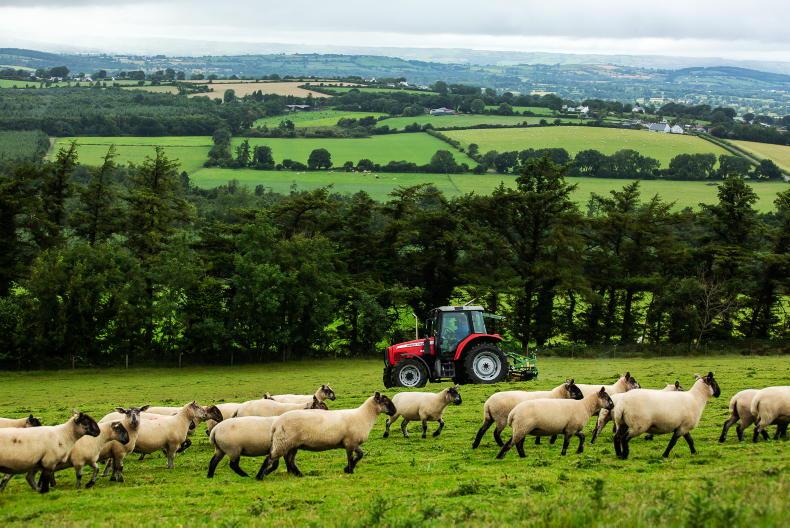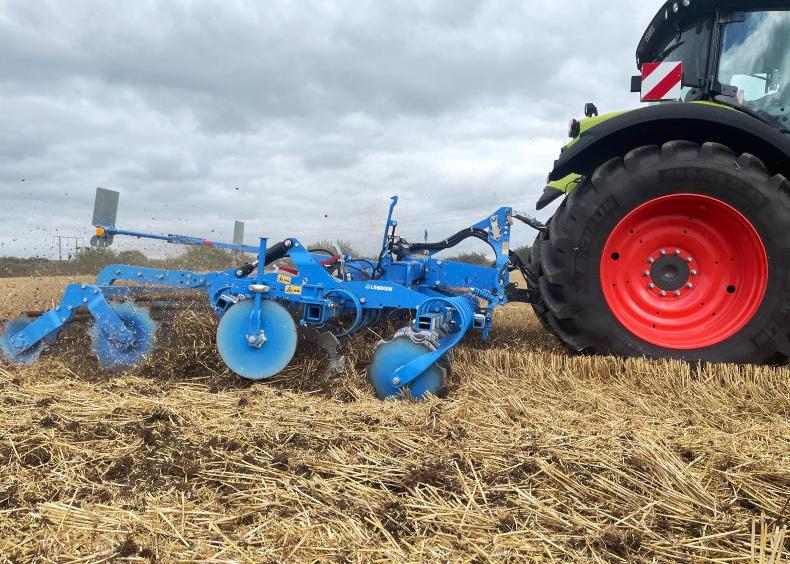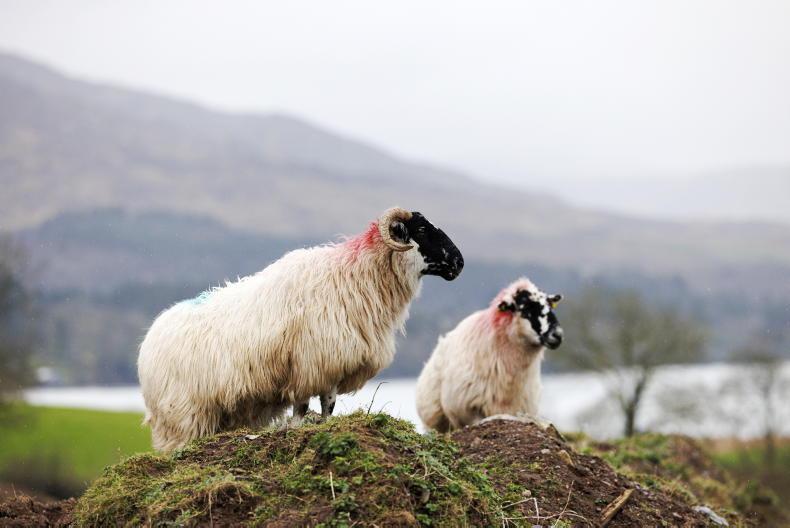There is a raft of scheme changes that farmers need to quickly become accustomed to in 2023.
Included in this list of scheme changes are alterations to the Areas of Natural Constraint (ANC).
The workings of the scheme are similar to the previous ANC, but there are notable changes concerning stocking rate requirements, livestock unit (LU) coefficients or values, and a new active farmer status check.
Stocking rate
Applicants are required to satisfy a minimum stocking rate across the calendar year - and also across a seven-month retention period.
The minimum stocking rate across the 12-month calendar period has been changed from at least 0.15LU to 0.1LU per eligible forage hectare (ha).
The minimum stocking rate for the retention period has also been reduced to 0.1LU/ha, while the length of the retention period has been changed from seven months to 28 weeks. This change has been introduced to eliminate any differences in the retention period triggered by months of varying days.
The reduction in the minimum stocking rate requirements to 0.1LU/ha will not lead to any significant changes for most farmers, as the livestock coefficients (LUs) have also been reduced in line with the stocking rate reduction.
Table 1 and 2 show the new and previous stocking rate coefficients.
As can be readily seen, the LU value for a ewe has also reduced to 0.1, while there is a new categorisation for cattle aged less than one year of age and a higher value for cattle aged over one year of age.
The LU value of suckler cows has also been reduced to 0.8LU, with dairy cows remaining at 1LU to take account of differences in excretion rates.
Breeding mares are eligible for contributing to the stocking rate calculation and will be awarded a lower LU value of 0.8, with the same proviso remaining that mares must have produced a foal in the previous two years.
Only 50% of the stocking rate requirement can continue to be fulfilled by donkeys. Deer, meanwhile, will be subject to an on-farm inspection by the Department.
Active farmer check
To receive payments under the next CAP, farmers must be deemed as 'active'.
The Department state the objective of the active farmer check is to “ensure the person receiving the scheme payments is the person farming the land being claimed”.
A number of criteria will be used to establish whether a farmer satisfies this check, with a farms stocking rate being the first port of call.
Farmers can satisfy the active farmer check by meeting a minimum stocking rate of 0.1LU/ha. A caveat to this stocking density is whereby a lower stocking rate may be justified on environmental grounds, similar to the current process under the ANC.
Farmers who do not satisfy the active farmer check based on the minimum stocking rate will have the opportunity to satisfy it by proving other agricultural activities are being carried out.
Grassland farmers
In relation to grassland farmers who maintain their lands by non-grazing means, they will be asked to indicate how land is being maintained and must be in a position to provide evidence to support this declaration.
Examples listed include the making of hay or silage, and in such cases where the Department has previously specified documentation, such as the purchase of fertiliser, plastic wrap or proof of payments made to cover contracting costs or received for sold forages, may be required to prove agricultural activity.
Agricultural activity
An agricultural activity must in general take place on each parcel every year.
But there is an exception to this rule and, under limited circumstances, agricultural areas may be used every second year and still satisfy the agricultural activity requirement.
This allowance can only be availed of for certain environmental, biodiversity or climate-related reasons and information relating to such will need to be provided for consideration.
Agricultural activity will be monitored through administrative checks.
In certain scenarios, at application stage applicants will be asked to indicate what agricultural activity they are completing on the parcel(s) in question.
Three scenarios highlighted include:
Commonage applicantsGrassland but no livestock presentHighly stocked applicants with a stocking density of greater than 3LU/ha.There will be five dropdown options available to submit land details for the relevant parcels, and these include:
Grazing livestockGrazing livestock and cutting hay / silage / haylageCutting hay / silage / haylageOther maintenance activitiesNo agricultural activity.The latter option will trigger an overclaim if the claimed area is greater than 0ha.
There is a raft of scheme changes that farmers need to quickly become accustomed to in 2023.
Included in this list of scheme changes are alterations to the Areas of Natural Constraint (ANC).
The workings of the scheme are similar to the previous ANC, but there are notable changes concerning stocking rate requirements, livestock unit (LU) coefficients or values, and a new active farmer status check.
Stocking rate
Applicants are required to satisfy a minimum stocking rate across the calendar year - and also across a seven-month retention period.
The minimum stocking rate across the 12-month calendar period has been changed from at least 0.15LU to 0.1LU per eligible forage hectare (ha).
The minimum stocking rate for the retention period has also been reduced to 0.1LU/ha, while the length of the retention period has been changed from seven months to 28 weeks. This change has been introduced to eliminate any differences in the retention period triggered by months of varying days.
The reduction in the minimum stocking rate requirements to 0.1LU/ha will not lead to any significant changes for most farmers, as the livestock coefficients (LUs) have also been reduced in line with the stocking rate reduction.
Table 1 and 2 show the new and previous stocking rate coefficients.
As can be readily seen, the LU value for a ewe has also reduced to 0.1, while there is a new categorisation for cattle aged less than one year of age and a higher value for cattle aged over one year of age.
The LU value of suckler cows has also been reduced to 0.8LU, with dairy cows remaining at 1LU to take account of differences in excretion rates.
Breeding mares are eligible for contributing to the stocking rate calculation and will be awarded a lower LU value of 0.8, with the same proviso remaining that mares must have produced a foal in the previous two years.
Only 50% of the stocking rate requirement can continue to be fulfilled by donkeys. Deer, meanwhile, will be subject to an on-farm inspection by the Department.
Active farmer check
To receive payments under the next CAP, farmers must be deemed as 'active'.
The Department state the objective of the active farmer check is to “ensure the person receiving the scheme payments is the person farming the land being claimed”.
A number of criteria will be used to establish whether a farmer satisfies this check, with a farms stocking rate being the first port of call.
Farmers can satisfy the active farmer check by meeting a minimum stocking rate of 0.1LU/ha. A caveat to this stocking density is whereby a lower stocking rate may be justified on environmental grounds, similar to the current process under the ANC.
Farmers who do not satisfy the active farmer check based on the minimum stocking rate will have the opportunity to satisfy it by proving other agricultural activities are being carried out.
Grassland farmers
In relation to grassland farmers who maintain their lands by non-grazing means, they will be asked to indicate how land is being maintained and must be in a position to provide evidence to support this declaration.
Examples listed include the making of hay or silage, and in such cases where the Department has previously specified documentation, such as the purchase of fertiliser, plastic wrap or proof of payments made to cover contracting costs or received for sold forages, may be required to prove agricultural activity.
Agricultural activity
An agricultural activity must in general take place on each parcel every year.
But there is an exception to this rule and, under limited circumstances, agricultural areas may be used every second year and still satisfy the agricultural activity requirement.
This allowance can only be availed of for certain environmental, biodiversity or climate-related reasons and information relating to such will need to be provided for consideration.
Agricultural activity will be monitored through administrative checks.
In certain scenarios, at application stage applicants will be asked to indicate what agricultural activity they are completing on the parcel(s) in question.
Three scenarios highlighted include:
Commonage applicantsGrassland but no livestock presentHighly stocked applicants with a stocking density of greater than 3LU/ha.There will be five dropdown options available to submit land details for the relevant parcels, and these include:
Grazing livestockGrazing livestock and cutting hay / silage / haylageCutting hay / silage / haylageOther maintenance activitiesNo agricultural activity.The latter option will trigger an overclaim if the claimed area is greater than 0ha.









SHARING OPTIONS